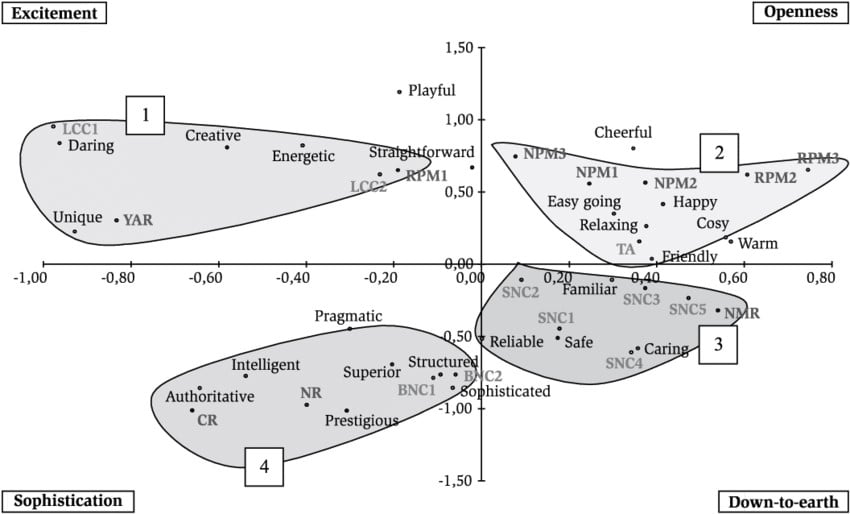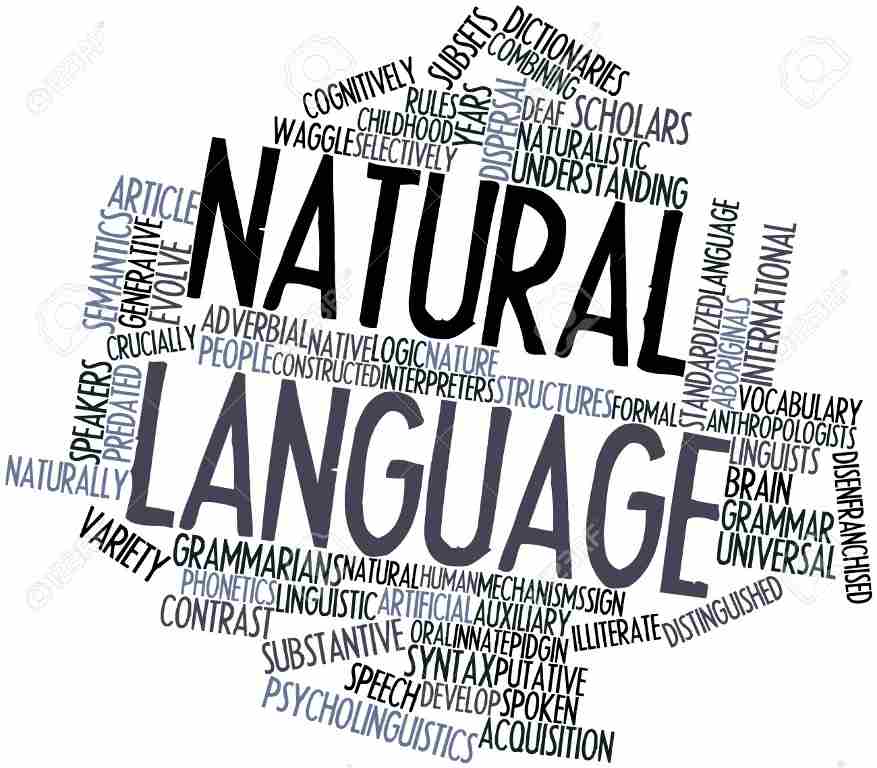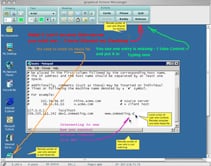Patent MarketPlace: Social Media Patents for Sale
 Multi-Network, Multi-Website IM and Networking (Popflyz): U.S. Patent No. 10,680,840
Multi-Network, Multi-Website IM and Networking (Popflyz): U.S. Patent No. 10,680,840
We may think we are all connected, but we really are not. Yes, we can send and receive an email from or to anyone anywhere in the world, but when it comes to real-time social networking, with whom you can IM (instant message) or otherwise communicate is limited by what social network you signed up for and which social network you are using at any point in time. If Emily is on LinkedIn, and Andrew is logged into Instagram, and Sarah is using Twitter, and Aiden is at Tumblr, there can be no immediate, real-time communication between and among them.
In a truly inter-connected world, we should be able to communicate in real time with anyone on any social network. That is exactly what this patent does! It enables a user to chat with a person, group of people, or groups of people who are logged in to a variety of different instant messaging applications or social networking websites using a single app. Users of the application created by this patent can chat with any contact on any of the user's contact lists across multiple different IM or social networks!
U.S. Patent No. 10,680,840 for a “System for integrating multiple IM networks and social networking websites” is both disruptive and foundational. The patent has a 2008 Priority Date, but the patent is valid and enforceable through 2030. And…it has 135 Forward Citations. The acquirer of this patent can create the first and only totally inter-connected instant messaging service!
 A Better Search Engine (Peer Belt): U.S. Patent No. 8,352,464
A Better Search Engine (Peer Belt): U.S. Patent No. 8,352,464
What are Veronica, Jughead, Jumpstation, infoseek, EINet Galaxy, and Aliweb? They are the search engines that preceded the launch of Yahoo! in 1994. Today’s leading search engine, Google, did not launch until 1998! There’s been a bunch of search engines that just did not make it. The challenge of creating and operating a search engine is to give users what they want, and it is not easy to figure out exactly what that is. How many times have you done a search, but received responses that were not what you were looking for?
This patent takes search engines to a whole new level by ranking a heterogeneous set of articles while giving priority to the articles people like most. It defines "like” as an implicit thing tied to article interaction time by the user and/or special actions executed by the user while reading the article. No special actions – like upvoting or clicking on a “Like” button – are needed for the articles to be ranked correctly.
The invention covered by this patent takes a giant step forward in the measurement and use of time as a key factor. How long it takes a reader to fully understand an article and any deviations from that are measured. It uses those variations to organize videos, pictures, music, and text into a single, unbiased-by-article-type index. Additionally, within the homogeneous-by-type articles, no two articles are the same. Texts have different lengths, pictures may depict different sets of objects – sometimes interacting with each other – and videos will differ in length. The result is a more responsive search and content prioritization engine, a search engine at which users spend more time, and that means more revenue for the search engine operator!
A content-recommendation engine based on the invention measured an up to 25% clickthrough rate when applied to a social mobile application with user time in the app nearly doubled. In yet another integration, a crowdsourced video platform with 100M videos seen each and every month, measured a 54% increase on top of the site’s homegrown baseline and, as with the previous example, user time on the site nearly doubled.
U.S. Patent No. 8,352,464 for a “System and method for ranking documents through human assistance” would be a strategic acquisition for a second-tier search engine or social content app that is ready to dramatically improve its functionality, usefulness, and degree of user-friendliness, as well as its revenue. This patent would also be a smart acquisition for any vertical search engine that addresses a specific industry, enterprise, or societal sector.
 Measuring Conceptual Proximity among People in Social Networks (Poltorak): Four U.S. Patents and Application
Measuring Conceptual Proximity among People in Social Networks (Poltorak): Four U.S. Patents and Application
Jeff and Sarah both like hiking, camping and the outdoors, but Jeff is a steak-eater and Sarah is a vegan. Sam and Megan are both church-goers and play tennis, but Sam drives a bus and Megan is a clinical psychologist. Matching people with similar – but also dissimilar – characteristics and interests is a challenge for any social networking or dating site. And it is an equally daunting challenge for advertisers who need to put their messages in front of prospects with exactly the right demographics and interests.
This patent portfolio creates a dataset for an individual – age, gender, race, religious beliefs, political affiliations, location, income, education, interests, and other factors. Based on that dataset, the individual’s location is determined within a multi-dimensional space in which each dimension represents one of the factors in the dataset. In essence, each person is plotted on a multi-dimensional grid that reflects all of that person’s characteristics, traits, and interests. Distances between that person and other people who have also been plotted based on their characteristics, traits, and interests are computed. Intelligent decisions can then be made regarding each individual as a friend or date suggestion, and advertisers can make more precise selections regarding prospecive customers for their products and services.
- U.S. Patent No. 8,930,385: Relevance estimation and actions based thereon
- U.S. Patent No. 9,485,313: Relevance estimation and actions based thereon
- U.S. Patent No. 9,886,495: Relevance estimation and actions based thereon
- U.S. Patent No. 10,776,403: Relevance estimation and actions based thereon
- U.S. Patent Application 20210026873: Relevance estimation and actions based thereon
- Business Collaboration: Synchronize all participants in time within the remote content -whether it is shared on server or on someone's desktop, and ensure that everybody stays focused, otherwise, their pointers would be missing
- Entertainment Collaboration like gaming, gambling, dating etc: Watch counterparty live reaction to own unpredictable behavior, ensure fairness of the game, and maintain privacy with no video
- Ad-hoc Collaboration on websites: Host to sell products or services with visitors "seeing" each other and discussing website content
- Educational tools for users to learn more about investing
- Synopsis of market data related to an investment
- Data tracking for a user’s investments
- Formation of investor groups
- Sharing of information about a market product with other users
- Research tools and online financial instrument
- Executive Summary
- Patent Overview and History
- Technology and Investment Summary
- Market Research
- Company Analysis
- Illustrative Evidence of Use (if applicable)
- Agricultural
- Artificial Intelligence
- Automotive/Vehicular
- Banking/Financial Services
- Beverages/Foods/Nutritional Products
- Cannabis and Medical Marijuana
- Construction/Building Trades
- Consumer Electronics
- Consumer Products
- Digital Currency/Cryptocurrency
- Drones/UAVs
- E-Cigarette & Vaping Technology
- E-Commerce
- Energy/Power Generation
- IoT Patents/Internet of Things
- Manufacturing
- Medical Electronics and Devices
- Mining/Drilling
- Mobile/Wireless
- Network/Location-Based Services
- Optics/Displays/Video/LED
- OTT Patents/Over-the-Top
- Packaging
- PCs and Notebooks
- Pharmaceuticals
- Robotics/Automation
- Semiconductor
- Smart Home/Smart Office
- Social Media
- Software, Apps, and Architecture
- Sports/Sporting Goods
- Telecommunications/IP Telephony
- Warehousing/Material Handling
- Other
- Go to Patent Index
- Return to Patent MarketPlace
The company that acquires this portfolio will own the next generation in the science of social networking based on demographics and personal interests. This portfolio would be a critical acquisition for any social networking or dating site, or for any digital advertiser seeking better matching of its messages with prospective customers.

 Deep Web Crawling (Glenbrook Networks): U.S. Patent No. 7,454,430
Deep Web Crawling (Glenbrook Networks): U.S. Patent No. 7,454,430
From the launch of the World Wide Web way back in 1991, there has been an ongoing challenge to improve the ability of web users to find what they are looking for, and for website owner/operators to make their sites as visible as possible. Complicating this challenge is the fact that the Internet continues to geometrically increase in content with no end or slow-down in site!
This patent creates “Deep Web Crawling,” a more efficient means to penetrate the Internet by the automatic collection of information residing behind HTML forms without the need to modify code to deal with the ever-changing structure of web sites and web pages. It also provides a page analysis that quickly distinguishes targeted content from “non-content” (undesired ads, links, spurious text, etc.), and automatically extracts the content targeted by the user (news articles, titles, authors, etc.). It does this without having to modify any code while dealing with the continually changing structure of web pages. It converts unstructured web content into structured data, enabling web users to extract target data, entities, and their attributes and relationships, and convert it into a usable and structured database format.
U.S. Patent No. 7,454,430 for a “System and method for facts extraction and domain knowledge repository creation from unstructured and semi-structured documents” takes navigation and search of the Internet to the next level. Three claim charts are available upon request that illustrate evidence-of-use by a search engine, software publisher, and financial reporting outlet.
 Natural Language Processing for Pull Advertising (Richfield): Two U.S. Patents
Natural Language Processing for Pull Advertising (Richfield): Two U.S. Patents
Imagine being able to reach a prospective buyer for your products and services just when that buyer is ready to make a buying decision! For example, when Jeff mentions that his tires are worn, he learns about a special on tires from your company. Shortly after Sarah mentions that she is considering taking a singles cruise for her upcoming vacation, information about your company’s cruise packages shows up. When Fred expresses a need for dental implants to repair facial injuries he incurred in an auto accident, information about your company’s affordable dental services appears!
Rather than waste time advertising to people who do not need tires, are not thinking vacation, and have no interest in dental implants, why not advertise to just those prospects who are ready to make a buying decision? The technology covered by this portfolio – originally used to diagnose chronic illnesses from heath statements – is far more accurate and selective than the current “bag of words” method, but it has the same computational efficiency. Imagine how much more effective every one of your advertising dollars would be if your marketing only addressed interested prospects for your products and services.
The ability to do exactly this exists, and it is covered by this patent portfolio. It creates a technology that scans forum, blog, and social media postings across the Internet and identifies those who have expressed a problem – like where to go for a good deal on tires, who offers the best singles cruises, or where to go for dental implants. From the data that is gathered and parsed down to the needs of the user, personalized replies are produced that contain pertinent and useful information about exactly what the prospect is seeking. Replies can be routed through selected intermediaries in a way that establishes a personal relationship between the prospect and the intermediary based on common experiences with the same problem.
| Patent No. | Title |
|---|---|
| 8,788,263 | Natural language processing for analyzing internet content and finding solutions to needs expressed in text |
| 9,805,018 | Natural language processing for analyzing internet content and finding solutions to needs expressed in text |
The company that acquires this portfolio will be able to offer its client highly pinpointed and incredibly efficient marketing services with an excellent lead-to-buyer conversion ratio!
 Multi-Party Communication in a Network (Uranus International): Six U.S. Patents
Multi-Party Communication in a Network (Uranus International): Six U.S. Patents
| Patent No. | Title |
| 7,765,261 | Method, apparatus, system, medium and signals for supporting a multiple-party communication on a plurality of computer servers |
| 7,765,266 | Method, apparatus, system, medium, and signals for publishing content created during a communication |
| 7,950,046 | Method, apparatus, system, medium, and signals for intercepting a multiple –party communication |
| 8,060,887 | Method, apparatus, system, and medium for supporting multiple-party communications |
| 8,627,211 | Method, apparatus, system, medium, and signals for supporting pointer display in a multiple-party communication |
| 8,702,505 | Method, apparatus, system, medium, and signals for supporting game piece movement in a multiple-party communication; |
This portfolio would be a key asset to companies engaged in web hosting, web conferencing, tele-conferencing, instant messaging, chat engines, online gaming, e-commerce, web publishing and/or law enforcement.
 Social Networking Platform for Investors (Yakubov): Two U.S. Patents
Social Networking Platform for Investors (Yakubov): Two U.S. Patents
These patents disclose a technology that provides a dedicated online social networking system for users interested in discussing investments:
U.S. Patent Nos. 8,458,084 and 8,458,085 for an “Investor social network website” would be a key acquisition for stock exchanges, brokerage firms, financial technology companies, and mobile phone app, website and social network developers.
Patent Brokerage Prospectus: Contact [email protected] to receive an analysis of each portfolio that includes:
We offer patents in these technologies:




